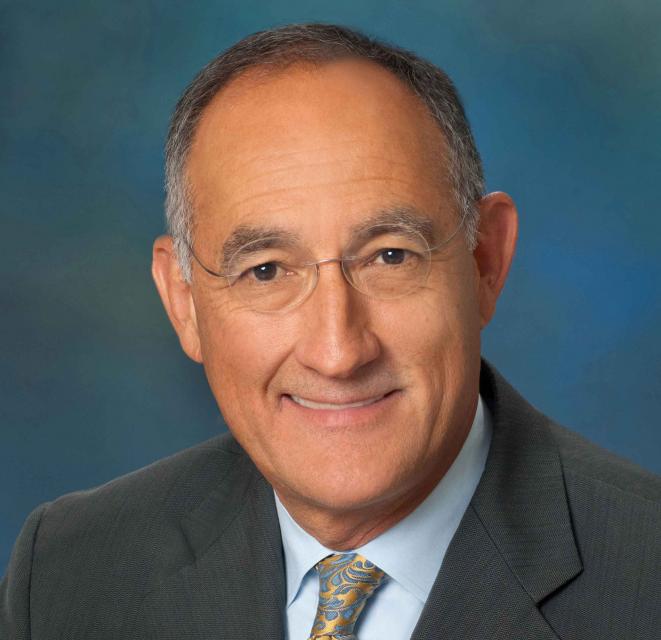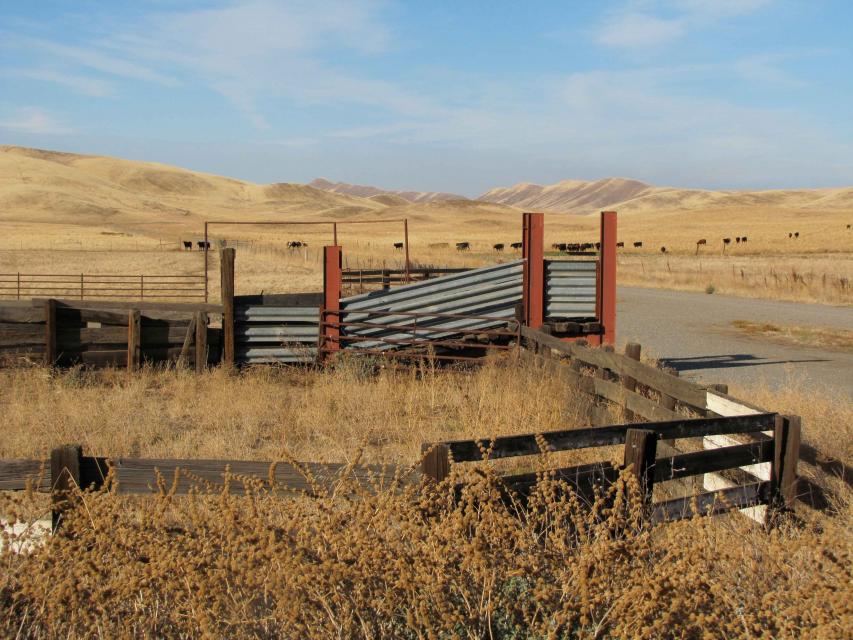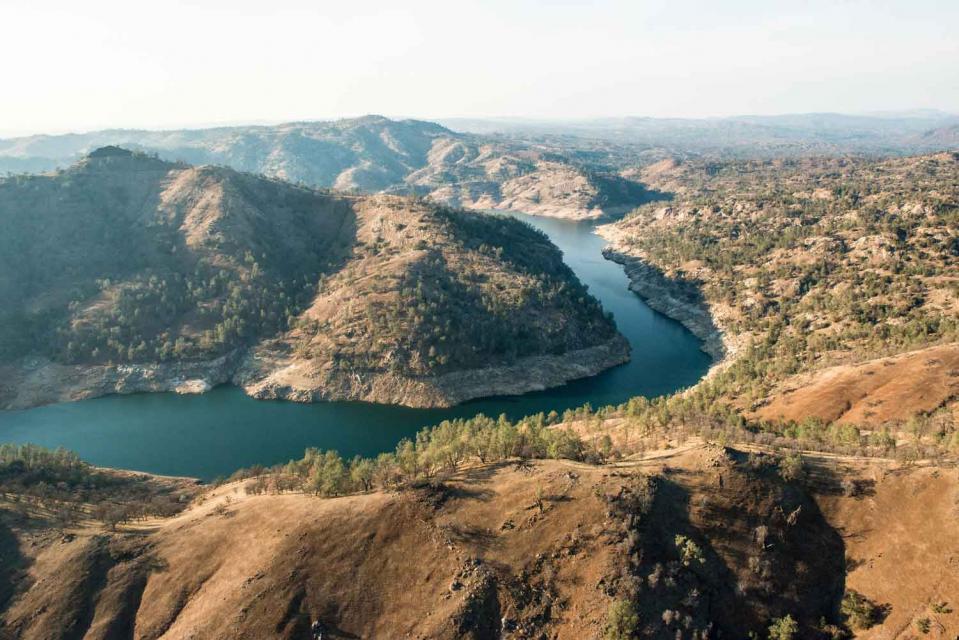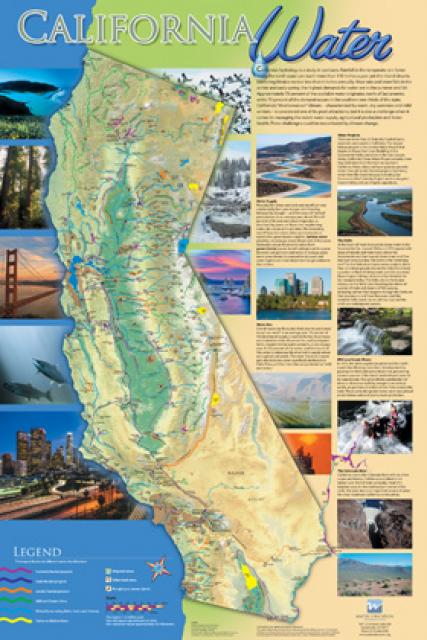As Decision Nears On California Water Storage Funding, a Chairman Reflects on Lessons Learned and What’s Next
WESTERN WATER Q&A: California Water Commission Chairman Armando Quintero
 New water storage is the holy grail
primarily for agricultural interests in California, and in 2014
the door to achieving long-held ambitions opened with the passage
of Proposition
1, which included $2.7 billion for the public benefits
portion of new reservoirs and groundwater storage projects. The
statute stipulated that the money is specifically for the
benefits that a new storage project would offer to the ecosystem,
water quality, flood control, emergency response and recreation.
New water storage is the holy grail
primarily for agricultural interests in California, and in 2014
the door to achieving long-held ambitions opened with the passage
of Proposition
1, which included $2.7 billion for the public benefits
portion of new reservoirs and groundwater storage projects. The
statute stipulated that the money is specifically for the
benefits that a new storage project would offer to the ecosystem,
water quality, flood control, emergency response and recreation.
Initially, 12 applicants (since reduced to eight) with projects totaling more than $5 billion in requested funding approached the California Water Commission, the entity charged with refereeing the allocation process. Among the proposals were the much-heralded Sites Reservoir in Colusa County northwest of Sacramento and Temperance Flat Dam on the San Joaquin River upstream of Friant Dam, east of Fresno.
“I am hoping we as a broader community do a good critique of the Prop. 1 process and say what worked and what didn’t about this approach to funding water storage.”
~Armando Quintero, chair, California Water Commission
But deciding which projects should get money — and how much — has not been easy for the commission. The scoring process for getting funding has been controversial. Proponents of Sites and Temperance, and elected officials have rebuked the commission for its perceived stinginess, accusing it of dragging its feet on decisions and for thwarting the public will. After several rounds of reviewing and scoring proposals, the commission released its final application scores Thursday. It is set to make conditional funding decisions July 24-26.
Against this backdrop, Western Water spoke with Armando Quintero, chair of the commission, about the trials and travails of the unprecedented allocation process. Quintero noted that funding projects based on their public benefits and assigning the commission to decide how money should be disbursed were unique to Prop. 1. The commission is not mentioned in the text of Prop. 68, a parks and water bond that voters just approved in June, or in another water bond headed for the November ballot. Still, Quintero believes there are lessons to be drawn from the commission’s experience with Prop. 1 that may inform decision-making on California water projects in the future.
WW: The commission was much criticized for how long it took to get to a decision on funding projects, and for how projects were ranked or rated. Was the criticism appropriate or fair?
Quintero: There continues to be widely differing opinions regarding the intent of the authors [of Prop. 1]. Regardless of their intent, the statute provided written instructions for implementing the program. While some maintain specific projects were intended to be funded by these monies, there were no earmarks [for specific storage projects] in Proposition 1.
 We have been accused of not spending
the money quick enough and that we were dragging our feet, but if
you look at the timeline laid out in the statute, we have met all
the deadlines. We were given two years to develop the
[regulations] in a public process. We held more than 50 public
meetings and created a stakeholder group that we meet with
regularly. We developed
the regs in a very public process. We also took the
commission meetings around the state, from Los Angeles all the
way up to Chico, and held public meetings about what people
wanted to see in the regs. It was an interesting context in which
to work.
We have been accused of not spending
the money quick enough and that we were dragging our feet, but if
you look at the timeline laid out in the statute, we have met all
the deadlines. We were given two years to develop the
[regulations] in a public process. We held more than 50 public
meetings and created a stakeholder group that we meet with
regularly. We developed
the regs in a very public process. We also took the
commission meetings around the state, from Los Angeles all the
way up to Chico, and held public meetings about what people
wanted to see in the regs. It was an interesting context in which
to work.
WW: What was the learning curve like for the commission during this process?
Quintero: This was a new approach to funding storage and a new process. Nobody’s done this before and virtually all our actions, all of our meetings, had to take place in a public forum. Commissioners were seeing information at the exact same time the public was getting it. For people who attended our meetings, there were actually times when we stopped the meeting and said, “We need a couple of minutes. We need to absorb what’s going on here.”
There are a lot of different opinions about what we should be doing and how we should be doing it. We were sticking to the statute and the legal framework in which we were working and, at the same time we were doing that, we were getting conflicting input from everybody from elected officials to different interest groups.
“We have been accused of not spending the money quick enough and that we were dragging our feet, but if you look at the timeline laid out in the statute, we have met all the deadlines.”
~Armando Quintero, chair, California Water Commission
It’s important to emphasize the statute laid out a competitive process. People have asked for more collaboration with applicants, but we recognized fully that if we did anything for one applicant, we’d have to do it for all applicants. And so, if we allowed an applicant to bring in new information after the deadline, well then everybody can bring in information and that would generate a whole re-evaluation of all the applications.
Normally, when you apply for funding from a state grant … you get an answer, yes or no, and that’s it. This process is completely different. There has been a lot of back and forth with applicants and stakeholders, especially after February, when it became clear the applications were complex, they were big, and this was a new [type of] application process. For example, we required modeling of climate change scenarios for each of these projects.
Through the appeals process, applicants were able to provide additional supporting information so commission staff and commissioners could more fully evaluate the projects and their public benefits. The process worked, as evidenced by the fact that staff-recommended public benefit scores for all applications improved as a result of the information submitted in the appeal process.
Another theme has been the urgent need for more water and that notion that somehow we were slowing that down. The need for storage was not a question. The question was, how do we build this water infrastructure and continue to have a healthy public benefit, meaning how do we keep our river systems healthy, how do we keep flood control working and how do we keep the Delta functional?
WW: Did applicants – and the public – fully understand Prop. 1’s requirements to get the money and how the commission was charged with arriving at its decisions?
Quintero: Our answers always stuck to the statute and to the regs. We were getting questions, “Why aren’t you doing this?” Well, look at the regs. At one of our meetings, a project proponent approached the podium and said, “This is supposed to be a public-private partnership.” I said, “Yes, and what that means is you show us the information that creates the understanding and fulfills the requirements of Prop. 1, and we invest state funds in the project. That is part of the partnership.”
“Bond money is expensive, and people don’t realize that this $2.7 billion [in Prop. 1 funding] actually will cost the state [more than] $5 billion. That to me is a loud message that we have to do this right.”
~Armando Quintero, chair, California Water Commission
The proposition spelled out certain deliverables. There have to be written agreements between each of these proponents and the State Water Resources Control Board, the Department of Fish and Wildlife and DWR [California Department of Water Resources] in terms of how their delivery of public benefits is going to happen. This really is a business deal between the state and these project proponents and we are still early in the process.
WW: You are scheduled to make your funding decisions in late July. What happens after that? Can you talk (generally) about the milestones the successful projects have to hit in order to get the money? And what happens to the bond money if a project stalls and doesn’t get built?
Quintero: First of all, we are very much looking forward to hitting that milestone in July. It has been our goal throughout this process to get this funding out the door to invest in the water storage capacity California needs to secure our future. We’ll also consider requests for early funding from some applicants to help with activities such as feasibility studies and environmental reviews.
On the heels of that, we’re going to focus on actions that have to happen between now and 2022 for applicants to meet the requirements of the statute and the regulations. Those requirements must be met before we can make final funding awards.
 We’ll have conversations in a public
forum about the next steps as the applicants get to work and get
their environmental documentation done and their permits in place
and then go out there and get their non-Proposition 1 funding
secured. By 2022, each of these projects has to show that at
least 75 percent of their funding will come from non-Proposition
1 sources.
We’ll have conversations in a public
forum about the next steps as the applicants get to work and get
their environmental documentation done and their permits in place
and then go out there and get their non-Proposition 1 funding
secured. By 2022, each of these projects has to show that at
least 75 percent of their funding will come from non-Proposition
1 sources.
The potential of a project stalling and not getting built has come up. One of the things we are evaluating for each of these applications is the implementation risk score, which looks at potential risks to construction or operation of the project. That is a big deal.
WW: You said at the Association of California Water Agencies conference in May that you expected the commission will be tapped in the future to make funding decisions on water projects. How will this experience inform that work in the future?
Quintero: It’s been a really good exercise and it’s been a learning curve for everybody. I hope that we as a state and the water community learn from this. We just passed Prop. 68 and there is another bond in November, and while those do not define a role for the California Water Commission, I am hoping we as a broader community do a good critique of the Prop. 1 process and say what worked and what didn’t about this approach to funding water storage. I have learned a lot in this process. Bond money is expensive, and people don’t realize that this $2.7 billion [in Prop. 1 funding] actually will cost the state [more than] $5 billion. That to me is a loud message that we have to do this right. We need to deliver on the promise of the language in the statute.
Know someone else who wants to stay connected with water in the West? Encourage them to sign up for Western Water, and follow us on Facebook and Twitter.









